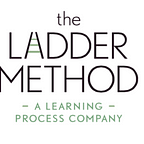How to Improve Executive Functioning in Students
Additional support in the classroom may help strengthen their executive functioning skills.
Nobody has to juggle different aspects of their life more than a student: having to pull all-nighters to cram for a test the next day, meeting various deadlines, making time for socializing, working to pay off their student loans, keeping their grades afloat, etc. All this (and more) requires immense focus, organization, time management, the ability to thrive under pressure, and flexibility.
The degree of executive function development is not the same in all children. For students with deficits, additional support in the classroom may help strengthen their executive functioning skills.
Offering Teaching Support
Understanding the kind of deficit the student has is necessary before addressing it. Lack of knowledge prevents a student from knowing what to do or how to complete a task. For instance the practice of active listening should be taught by citing instances to students who struggle to control their desires to speak during other people’s conversations.
Metacognition
Metacognition is, put simply, thinking about one’s thinking. More precisely, it refers to the processes used to plan, monitor, and assess one’s understanding and performance. Promoting independence with a skill sometimes involves showing pupils the procedures or inquiries they may make for themselves.
For instance, if we talk about a younger child, the teacher might have to voice out to them, “You are missing a pencil. You need a pencil to complete your task. Where can you find a pencil?”
Time Management
A helpful strategy for learning time management is posting schedules. A daily plan in the classroom helps pupils get ready for the upcoming activities. These timetables are frequently posted in places where all students may access them during the school day.
Long-term assignments might be extremely difficult for pupils with executive functioning disorders. Teaching kids directly how to organize more significant tasks and divide them into smaller, more manageable chunks is one method to solve this problem.
Review Before New Learning
Give students the chance to review prior knowledge. The review may take the form of a brief oral presentation, or a mind or concept map produced in small groups might potentially be used as the format for a review.
Concept maps are effective visual organizers; because organizing thoughts may be just as challenging as managing time and resources, graphic organizers might be especially beneficial for children who struggle with executive functioning.
Environmental Support
Supporting the environment entails establishing an environment where kids may flourish. Some quick techniques for assisting pupils in enhancing their executive functioning include:
Publishing your daily schedule — students benefit from structure provided by clear, consistent routines and processes.
Offering visual aids, such as timetables and folder with color-coded schedules and posters with routines or methods for fixing problems. Consider underlining essential phrases and concepts in texts.Reducing clutter and providing distinct locations for each student in the classroom.
Key Takeaway!
Enlisted above were some basic steps that help improve students’ executive function and make it easier for them to comprehend instructions and carry out everyday tasks efficiently. These, coupled with the teacher’s consistent support and patience, can do wonders for students with executive dysfunction, enhancing their abilities significantly.
